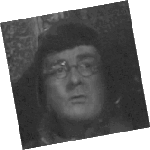Part 27: Sub-Season 4B. Red Thunder (F-100D Super Sabre)
Sub-Season 4B. Red Thunder - Cooking With Gas (F-100D Super Sabre)
quote:
Dear Mum,
The fireworks we made were very pretty! Now the guys say, that to really overcome my new-found fear of flying, I must handle something, which looks just like that not so super plane. They explained, that it will behave now, and that the new white rockety things will let me do my work without making any sharp turns. I shall take a few paper bags with me, just in case.
Hugs and sloppy kisses,
Baldrick
The (AIM-9)B-reel

In which you might start having doubts about our new weapon
The loadout options are rather average, the entire Mk.80 series are on display. SF2 also has a couple of later modifications of F-100D, but none of them support AGM-12 Bullpup. In fact, Bullpup is completely absent from the sim. Probably, because the developer found manual guidance too hardcore.

P.S.
Makrond posted:
The 'strange fins' on the wings of the Super Sabre are wing fences. They're basically omnipresent on early Cold War-era jets, partly because swept wings have a tendency to stall in horrible ways, and partly because designing planes right the first time is hard. The short version is, wing fences make the plane more predictable when it stalls and makes it less likely to do something that makes the stall worse, such as pitch up hard and enter an unrecoverable spin.
The longer version:
Vortices on the top of the wing increase drag and reduce effective lift, which makes the wing very likely to stall. These vortices can be caused by, among other things, boundary layer separation at high angles of attack (ie, a plane pitching up sharply). In the F-100D's case they placed the wing fences near the ends of the wings, preventing the vortices from spreading to the wingtips (well, unless you really fuck up) and stopping the airflow from turning too far spanwise ('sideways' from the perspective of the wing) at low speeds. This prevents the sudden pitch-up that the F-100A and other early Century-series fighters suffered from when entering both high-speed and low-speed stall states, which would generally then result in a flat spin, a very dangerous type of spin that is difficult to recover from. The other side of this however is that because the rest of the wing will still have vortices on top, the plane will still drop one wing and enter a spin in a high-speed stall (pitching up too sharply at speed). Fortunately, it will likely be a steep spin with the nose already pointing below the horizon, making recovery easier. The F-100D is also better balanced and has a slightly lower wing loading than its predecessors, giving it a much better chance of recovery from a steep spin.
The A-6 Intruder (as well as plenty of Russian jets such as the MiG-17) also has wing fences near the wingtips, but has a second set closer to the fuselage, near the wing roots. The closer set of wing fences prevents vortices from spreading along the length of the wing in the first place, which effectively reduces the stall speed of the plane and makes it very gradually enter a stall state as the vortices take time to spread over/around the fences. This is a nice feature in a subsonic attacker that has to land on a carrier - catching the tailhook on the arrestor wires requires deliberately increasing the angle of attack at low speeds, which will very quickly cause all kinds of problems, especially with swept wings.
